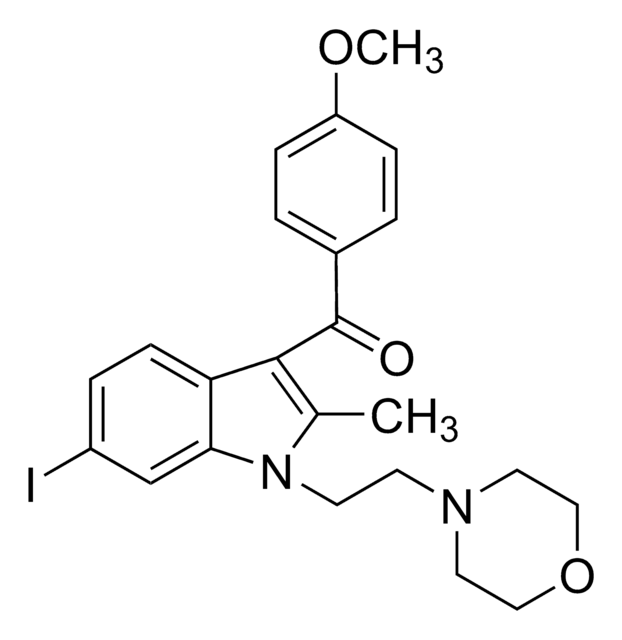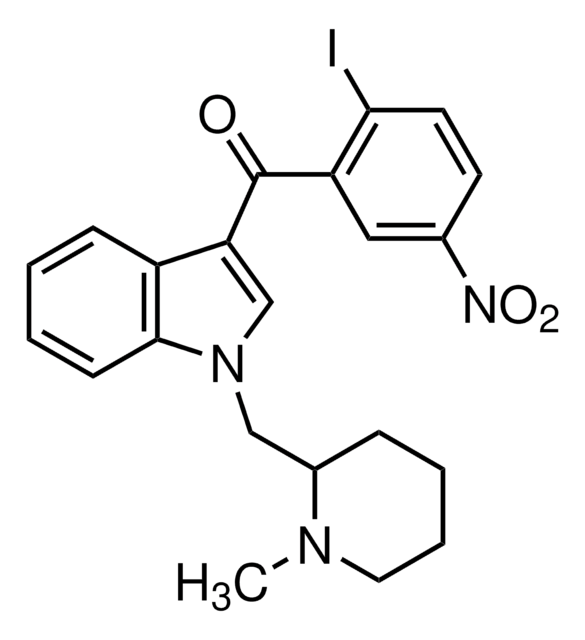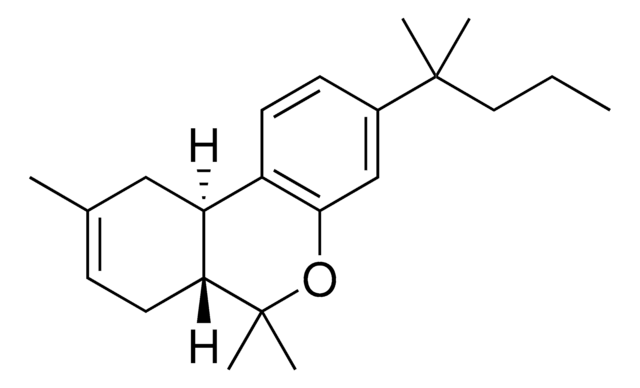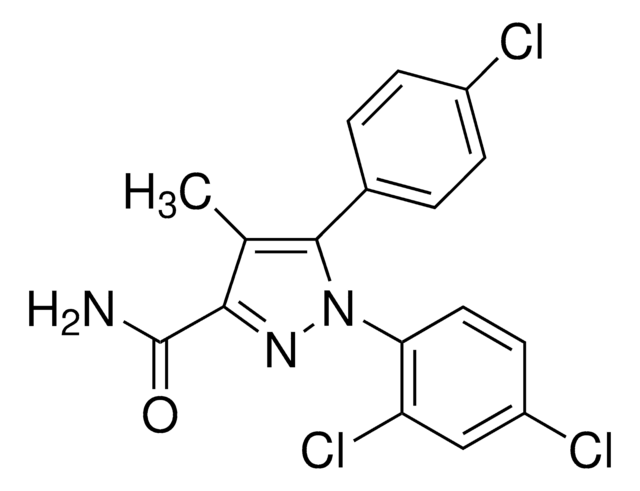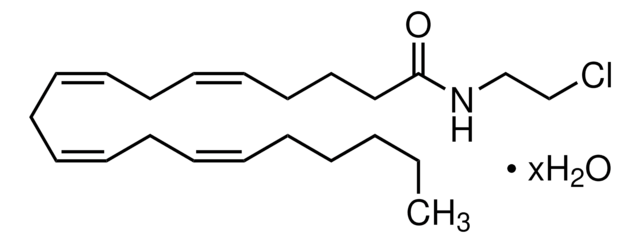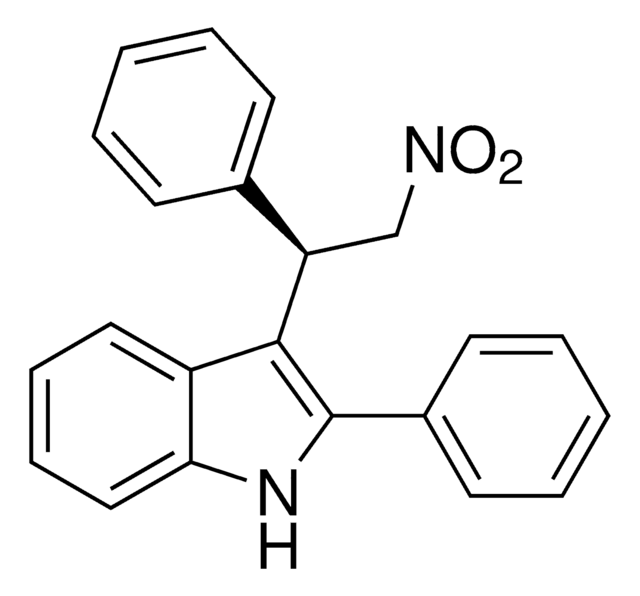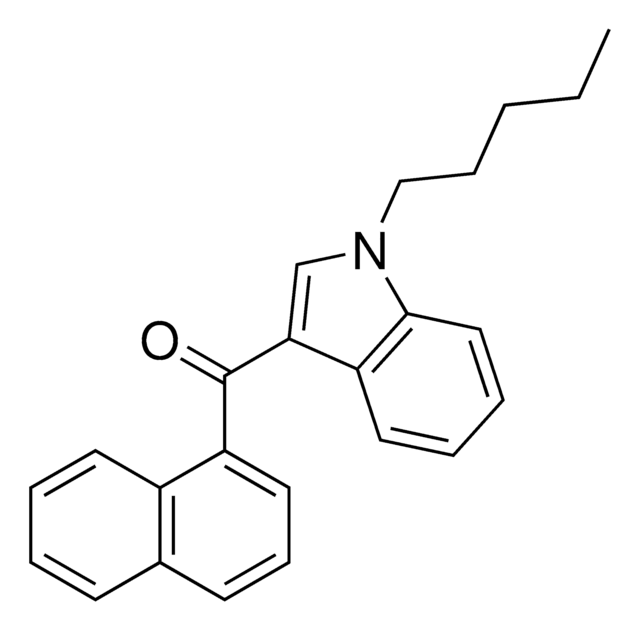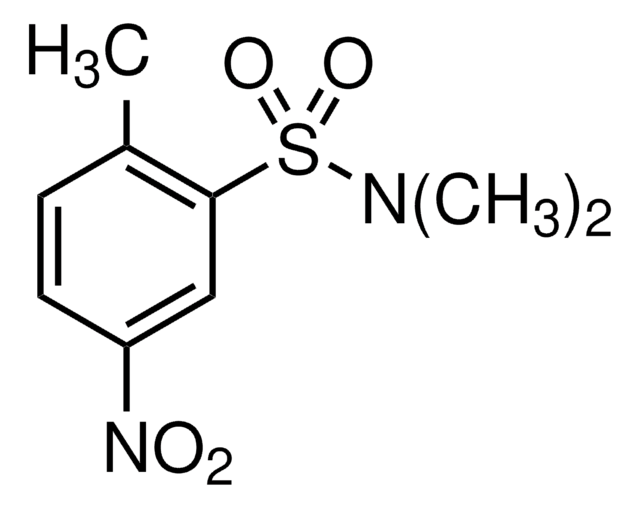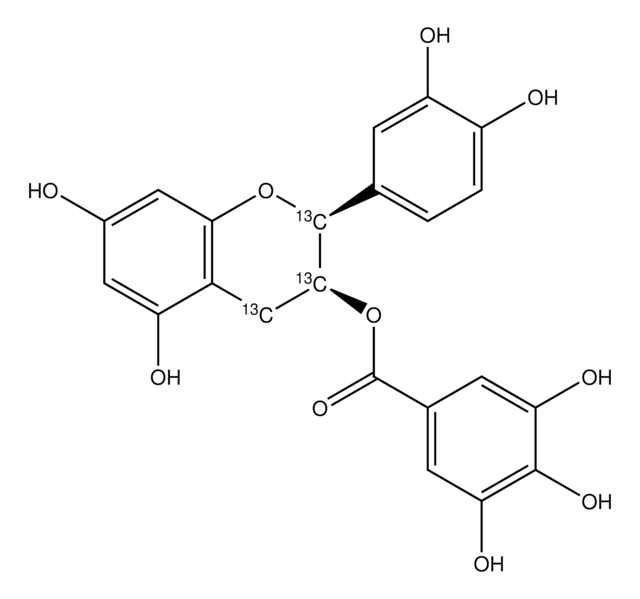A0980
AM281
≥98% (HPLC)
Sinónimos:
1-(2,4-Dichlorophenyl)-5-(4-iodophenyl)-4-methyl-N-4-morpholinyl-1H-pyrazole-3-carboxamide, AM 281
About This Item
Productos recomendados
Quality Level
assay
≥98% (HPLC)
form
powder
storage condition
desiccated
color
white
solubility
DMSO: >6 mg/mL
H2O: insoluble
storage temp.
2-8°C
SMILES string
Cc1c(nn(-c2ccc(Cl)cc2Cl)c1-c3ccc(I)cc3)C(=O)NN4CCOCC4
InChI
1S/C21H19Cl2IN4O2/c1-13-19(21(29)26-27-8-10-30-11-9-27)25-28(18-7-4-15(22)12-17(18)23)20(13)14-2-5-16(24)6-3-14/h2-7,12H,8-11H2,1H3,(H,26,29)
InChI key
AJFFBPZYXRNAIC-UHFFFAOYSA-N
Gene Information
rat ... Cnr1(25248)
Application
- to study its effects on memory deficit following naloxone-precipitated morphine withdrawal in mice
- to study the role of CB1 receptor system in modulating acetaldehyde-induced effects in rats during the extinction-, relapse-, and conflict-experiments
- to study its effect on scopolamine-induced memory deficit using object recognition paradigm
- to block synthetic cannabinoid (HU210)-induced analgesia in the ventrolateral orbital cortex (VLO) to evaluate the effect of CB1 receptors on the VLO modulation of pain
Biochem/physiol Actions
Features and Benefits
signalword
Danger
hcodes
Hazard Classifications
Acute Tox. 2 Oral - Eye Irrit. 2 - Skin Irrit. 2 - STOT SE 3
target_organs
Respiratory system
Storage Class
6.1A - Combustible acute toxic Cat. 1 and 2 / very toxic hazardous materials
wgk_germany
WGK 3
flash_point_f
Not applicable
flash_point_c
Not applicable
ppe
Eyeshields, Faceshields, Gloves, type P2 (EN 143) respirator cartridges
Elija entre una de las versiones más recientes:
¿Ya tiene este producto?
Encuentre la documentación para los productos que ha comprado recientemente en la Biblioteca de documentos.
Nuestro equipo de científicos tiene experiencia en todas las áreas de investigación: Ciencias de la vida, Ciencia de los materiales, Síntesis química, Cromatografía, Analítica y muchas otras.
Póngase en contacto con el Servicio técnico